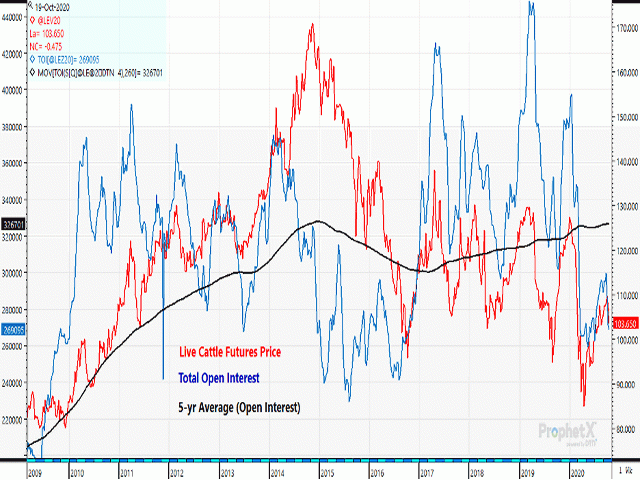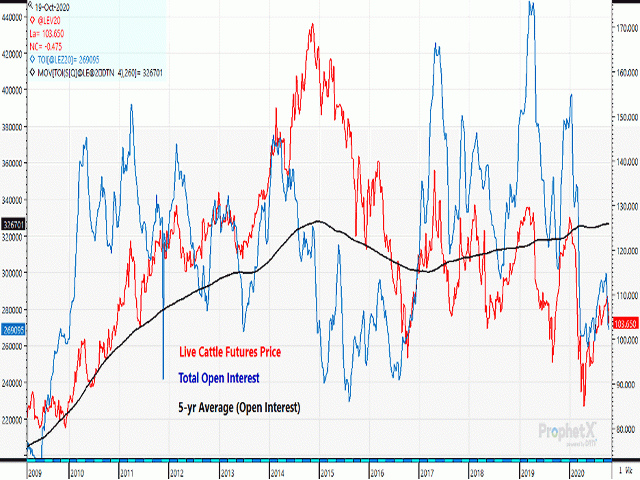Sort & Cull
Market Activity Essential for Price Support
Like any other market, the overall health of the live cattle futures complex depends on active trade and the ability to gain and sustain volume daily. Total open interest is one of the best ways to measure market activity. This does not track the actual trade volume seen daily but focuses on the number of open contracts at a given time.
The futures market, and specifically live cattle futures in this situation, is not much different than any other retail or food service business that you may think of. The number of customers in a business or restaurant will typically give a pretty good indication of the support for and health of the business. There are significant exceptions to this rule, but generally speaking, a store full of customers does better than a store with limited shoppers entering the doors. Total open interest can be loosely used in much the same way. Typically, larger open interest signals more active participants are willing and able to participate in the market, thus creating more accurate price direction.
P[L1] D[0x0] M[300x250] OOP[F] ADUNIT[] T[]
As you can see from the chart accompanying this article, the blue line represents total open interest in live cattle futures. Open interest has seen significant pressure during October as traders have moved out of the cattle complex. Although current open interest remains above the pandemic lows seen in May, current open interest is just 10,000 contracts above those levels, which also represent six-year lows. Notice that the current open interest level has moved significantly below the five-year average (black line), which is currently near 326,000 contracts.
The fact that live cattle futures have not been able to attract active re-buying by commercial or investment traders continues to pressure the market and raises concerns that further losses may develop soon.
Over the past 10 years, consistent trends that show bottoms in live cattle futures (red line) lag the open interest low. This shows the importance of regaining trader interest before prices can sustain strong gains.
Expectations of tighter cattle supplies may help limit further price pressure over the coming months. But the concern that active participation will remain absent from the live cattle complex during the rest of 2020 and early 2021 could continue to weigh on prices over the coming months.
The first signal to look for in the event of a potentially sustainable live cattle rally will be the ability to change the open interest trend in the market. Once total open interest in live cattle futures starts to consistently and steadily move higher, it is fair to expect that renewed price support will continue in the coming weeks. However, current open interest in live cattle futures has lost more than 30% from pre-COVID-19 levels, creating significant concerns of limited trade interest willing to return to the cattle market anytime soon.
Rick Kment can be reached at rick.kment@dtn.com
(c) Copyright 2020 DTN, LLC. All rights reserved.






Comments
To comment, please Log In or Join our Community .